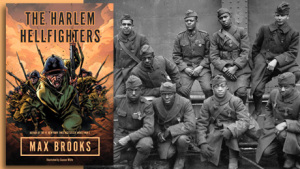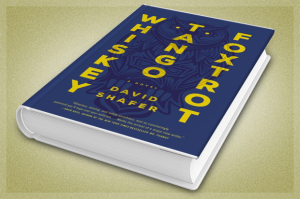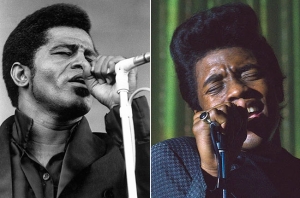Because I don’t have to, I’m not going to bother with a Top-Ten movie list this year. This is also because there wasn’t a whole lot I saw at the multiplexes in 2014 that got me as wound up as the stuff I’m listing below. And if I bothered to enumerate the movies that did, I’d likely end up with a list that more or less looks like everybody else’s, which precisely none of us wants.
Instead, I’m going to pull together a rag basket of items that for various reasons made the most resounding connections with my frontal lobes through the prevailing media din of weapons-grade white noise and free-styling schaudenfreude. Most came out this year; some didn’t, but I got around to them for the first time this year, so they count. (My list, my rules.)
Quite likely, I’m forgetting, or blocking some stuff. It’s been that kind of year. And there were some things I couldn’t bring myself to include, whatever my absorption level. Scandal, to take one example, remains for many people I trust an irresistible sack of Screaming Yellow Zonkers. But outside of Joe Morton’s righteously Shatner-esque scenery chewing and the mad electricity vibrating in Kerry Washington’s eyeballs, I’ve found that its live-action anime antics can go on without me for at least a couple weeks at a time.
So anyway…(as this fellow might out it)
The Harlem Hellfighters by Max Brooks –Brooks made his name mythologizing the walking-dead (World War Z, The Zombie Survival Guide). But he proves himself just as conscientious in rendering factually grounded savagery in this fire-breathing graphic (in every sense) novel about the legendary all-black 369th Infantry Regiment that roared out of Harlem to fight in World War I, the hinge between post-Reconstruction’s legally-sanctioned terrorism of African Americans and the gathering pre-dawn of the civil rights movement. Though the Hellfighters’ passage from raw, often humiliated recruits to take-neither-prisoners-or-shit-from-anybody warriors is rousing, the visual depictions of squalor, disease and violence (thanks to the classic-war-comics élan of illustrator Canaan White) deepen the many ironies layered onto this saga; not the least of which was that it was only through the horrific, demeaning process of war that black men could begin proving their worthiness as American citizens – and even that wasn’t enough. To establish its own validity as historical fiction, Brooks’ account brings in such real-life badasses as James Reese Europe, Henry Lincoln Johnson and Henri Gouraud for colorful cameos. Of course, a movie is planned. Good luck trying to top this
Scarlett Johansson –I’ve already waxed rhapsodic about the commanding way she works the alien-enigmatic in the polarizing Under the Skin. By contrast, the art-house crowd showed relatively little-to-no-interest in Lucy in which she played a hapless, sponge-faced drug mule accidently injected with a drug transmuting her into a time-distorting, matter-altering, ass-kicking wonder woman. But Luc Besson’s acrylic pulp fantasy proved that few, if any movie actresses today are as cavalierly brilliant at throwing down wire-to-wire magnetism in such nutty eye candy. Manny Farber would have wallowed in the termite splendor of it all. Even her by-now borderline-gratuitous Black Widow turn in support of yet another Marvel money machine (Captain America: The Winter Soldier) retained enough droll slinkiness to make one suspect that giving the Widow her own vehicle might be a bit of a let-down. Then again, Ms. Scarlett never let me down once this year, so why dwell upon the purely speculative?
Whiskey Tango Foxtrot By David Shafer – This novel took me by surprise as it did several other critics this past summer. Up till that point, it hadn’t occurred to me that the legacies of both Richard Condon and Ross Thomas could, or even should be filled. Nevertheless, anyone whose familiarity with these authors’ works extends beyond Condon’s The Manchurian Candidate or Thomas’ The Fools In Town Are On Our Side will recognize Shafer’s sardonic humor, crafty plotting and humane characterizations as reminiscent of both authors – which is another way of saying these qualities aren’t what readers of contemporary techno-thrillers are used to. Also, much like Condon, Shafer knows, or strongly suspects, what we’re all afraid of, deep down, and finds a surrogate for this fear that’s both outrageous and plausible; in this case, a sinister cabal of one-percenters planning to seize total control of storing and transmitting information worldwide, thereby making recent abuses by the NSA, or whoever has it in for Sony Pictures, seem like benign neglect. This premise scrapes somewhat against territory controlled by what used to be called the “Cyberpunk School” as well as Thomas Pynchon, except that Shafer’s three 30-ish hero-protagonists are at once unlikely and recognizably human: an Iranian-American NCO operative who stumbles into the conspiracy so haphazardly she’s not sure what it is until it goes after her family, a self-loathing self-help guru in debt to his eyeballs who’s recruited by the cabal to be its “chief storyteller” and his estranged childhood friend, a substance-abusing misfit with a trust fund as thick as his psychiatric case file. They are all swept into an underground movement called “Dear Diary” which knows what the cabal is up to and is deploying its own secret network to bring it down. Social comedy, political melodrama and digital menace don’t always blend as well as they do here. And this is only Shafer’s first novel, meaning, as with the other masters cited above, he can only get better at this stuff from here on.
Get On Up & Mr. Dynamite: The Rise of James Brown – The former is a feature biopic; the latter an HBO-exhibited documentary. Both told me things I didn’t know about their shared subject – or, maybe more to the point, framing what I already knew about James Brown’s story in a manner that showed him as far more than an unholy force-of-nature. If I lean more towards the documentary, it’s because the revelations are more striking (not just the spectacular “what” of Brown’s showmanship, but the painstaking “how” of its components along with its savvy adjustments over time). And its testimonies are altogether more enlightening (Mick Jagger, who co-produced both, sets the record straight on how the “T.A.M.I. Show” sequence of acts really went down) I loved listening to band members let loose on what they really thought of their sometimes thoughtless boss as well as what second-generation Fabulous Flames as Bootsy Collins learned on and off the road from Brown. Tate Taylor’s biopic has a different agenda, but it strives to be just as faithful, if not always to the facts, to the facets of Brown’s fiery, hair-trigger temperament. Maybe it tried too hard. (As far as B.O. was concerned, Get On Up…didn’t.) But Chadwick Boseman’s, conscientious rendering of Brown’s tics and turbulence is almost as breathtaking to watch as one of the Godfather’s actual Soul Train appearances. Now that Boseman’s successfully portrayed two historic icons, I remain anxious to see what he can do with a Regular Guy role sometime between now and Marvel’s Black Panther movie.
FX– The third, and best, season of Veep; the harrowing, jaw-dropping single-take night scene in True Detective; Billy Crystal’s astute, heartwarming 700 Sundays; Girls and its discontents; the sheer how-can-it-possibly top-itself-again-and-again momentum of Game of Thrones…There was so much to love about HBO this year that I feel like an ingrate for professing my affection for a rival, even though there are things in both FX and HBO that I’ve neglected (American Horror Story, Boardwalk Empire) or shortchanged (The Strain, The Leftovers). Nonetheless anyplace I can find Louie, Archer, The Americans and (for me, especially) Justified is a cozy, stimulating home for my mind. Add to this the deep-dish pleasures of Fargo, whose greatness sneaked up on me the way Billy Bob Thornton’s meatiest, slimiest character since Bad Santa slithered through the frozen tundra, and of The Bridge, whose shrewd and nervy evolution from its first, somewhat derivative season went mostly unnoticed by the professional spectator classes and I’m not sure FX doesn’t have a deeper bench, pound for pound, than its bigger rivals., I prefer a lean, mean FX that takes so many worthy, edgy chances that it can be forgiven for something as lame and sad as Partners. (Never heard of it? Good. We shall speak no more.)
The Oxford American “Summer Music Issue” – I, along with many of my friends, have lots of reasons for being mad at the once-and-future Republic of Texas. But I still love its literary heritage and, most especially, its thick, spicy blend of home-grown music, which takes up C&W, R&B, Tex-Mex, swing, funk, hip-hop and even some avant-garde jazz courtesy of native son Ornette Coleman. They’re all represented on a disc accompanying a special edition of this always mind-expanding quarterly. Compiled by Rick Clark, this CD provides the kind of kicks your smarter buds used to slap together on cassette as a stocking stuffer. Besides the aforementioned Ornette (“Ramblin’”), there’s some solo Buddy Holly (“You’re the One”), early Freddy Fender (“Paloma Querida”), priceless Ray Price (“A Girl in the Night”) and the unavoidable Kinky Friedman (“We Reserve the Right to Refuse Service to You”). The left-field surprises include an especially noir-ish take of Waylon Jennings doing his signature “Just To Satisfy You,” a deep-blue rendition of “Sittin’ On Top of the World” by none other than Bob Wills and his Texas Playboys, Ruthie Foster’s espresso-laden performance of “Death Came a-Knockin’” and Port Arthur’s own Janis Joplin fronting Big Brother and The Holding Company on a “Bye, Bye, Baby” that swings as sweet as Julio Franco once did. I don’t want to shortchange the actual magazine, which includes James Bigboy Medlin’s reminiscences of working with Doug Sahm, Tamara Saviano’s portrait of Guy Clark and Joe Nick Patoski’s story about Paul English, Willie Nelson’s longtime drummer. It doesn’t beat a spring-break bar tour of Austin, but it’ll do until I get a real one someday.







